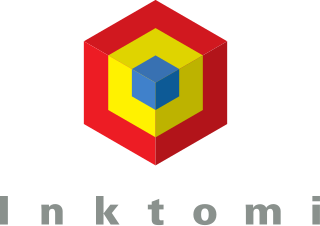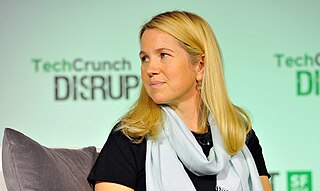
Inktomi Corporation was a company that provided software for Internet service providers (ISPs). It was incorporated in Delaware and headquartered in Foster City, California, United States. Customers included Microsoft, HotBot, Amazon.com, eBay, and Walmart.

Paul Graham is an English computer scientist, essayist, entrepreneur, investor, and author. He is husband of Y Combinator founding partner Jessica Livingston. Graham is best known for his work on the programming language Lisp, his former startup Viaweb, co-founding Y Combinator, his essays, and Hacker News.

Robert Tappan Morris is an American computer scientist and entrepreneur. He is best known for creating the Morris worm in 1988, considered the first computer worm on the Internet.

Philip Greenspun is an American computer scientist, educator, early Internet entrepreneur, and pilot who was a pioneer in developing online communities like photo.net.

OpenText Corporation is a Canadian company that develops and sells enterprise information management (EIM) software.

Avram Joel Spolsky is a software engineer and writer. He is the author of Joel on Software, a blog on software development, and the creator of the project management software Trello. He was a Program Manager on the Microsoft Excel team between 1991 and 1994. He later founded Fog Creek Software in 2000 and launched the Joel on Software blog. In 2008, he launched the Stack Overflow programmer Q&A site in collaboration with Jeff Atwood. Using the Stack Exchange software product which powers Stack Overflow, the Stack Exchange Network now hosts over 170 Q&A sites.

In computing, CLISP is an implementation of the programming language Common Lisp originally developed by Bruno Haible and Michael Stoll for the Atari ST. Today it supports the Unix and Microsoft Windows operating systems.
Steven Jeromy Carrière is a Canadian computer software engineer.

RTML is a proprietary programming language used exclusively by Yahoo!'s Yahoo! Store and Yahoo! Site web hosting services.

Symfony is a free and open-source PHP web application framework and a set of reusable PHP component libraries. It was published as free software on October 18, 2005, and released under the MIT License.

Daniel Stewart Butterfield is a Canadian billionaire businessman, best known for co-founding the photo-sharing website Flickr and the team-messaging application Slack.

Jessica Livingston is an American founding partner of the seed stage venture firm Y Combinator and author. She is the wife of founding partner Paul Graham.

Splunk Inc. is an American software company based in San Francisco, California, that produces software for searching, monitoring, and analyzing machine-generated data via a web-style interface.

John Resig is an American software engineer and entrepreneur, best known as the creator and lead developer of the jQuery JavaScript library. As of 2021, he works as the chief software architect at Khan Academy.
Joyent Inc. is a software and services company based in San Francisco, California. Specializing in cloud computing, it markets infrastructure-as-a-service. On June 15, 2016, the company was acquired by Samsung Electronics.

Founders at Work: Stories of Startups' Early Days (2007) is a book written by Jessica Livingston composed of interviews she did with the founders of famous technology companies concerning what happened in their early years.

Powerflasher FDT is an integrated development environment (IDE) built on the Eclipse platform for development of Adobe Flash-based content.

DR-WebSpyder is a DOS web browser, mail client and operating system runtime environment that was developed by Caldera UK in 1997. It was based on the DR-DOS operating system and networking components from Novell as well as the Arachne web browser by Michal Polák of xChaos software. The system was designed to run on low-end desktop systems, but being able to boot and execute from disk as well as from ROM or network, it was also tailored for x86-based thin clients and embedded systems with or without disk drives. Using the web browser as its principal user interface, it could be also used for kiosk systems and set-top boxes. It was ported to Linux in 1999 under the name Embrowser and was renamed Embedix Browser in 2000.
















